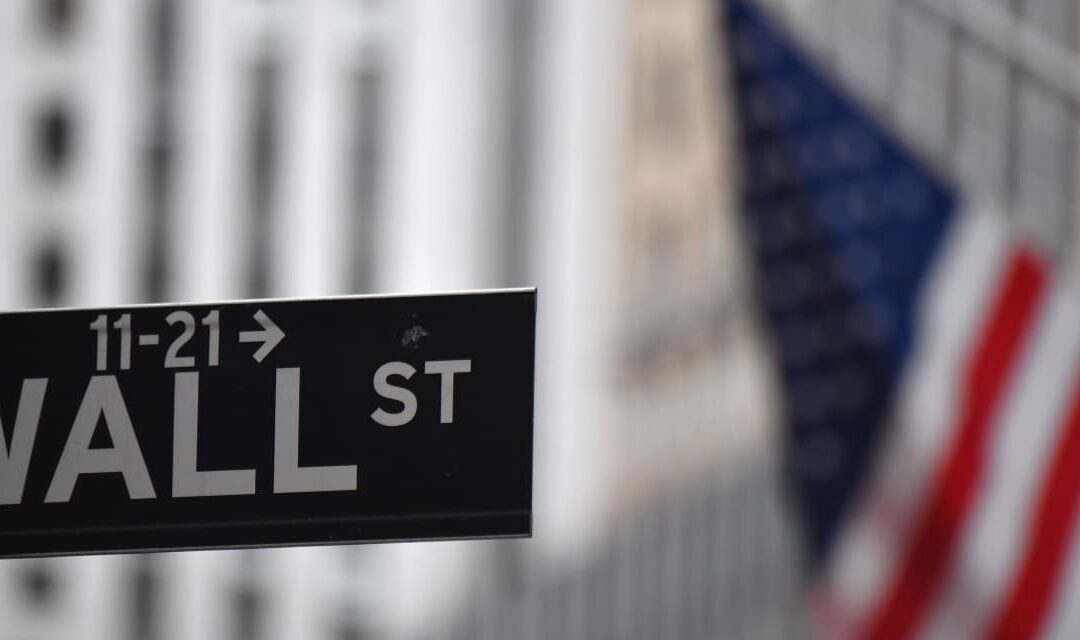U.S. stock index futures Tuesday indicated Wall Street will start the new trading year on a negative note after a 2023 rally that left the S&P 500 just shy of a fresh record.
How are stock-index futures trading
-
S&P 500 futures
ES00,
-0.82%
fell 37 points, or 0.8%, to 4783 -
Dow Jones Industrial Average futures
YM00,
-0.62%
lost 223 points, or 0.6%, to 37789 -
Nasdaq 100 futures
NQ00,
-1.16%
eased 185 points, or 1%, to 16839
On Friday, the Dow Jones Industrial Average
DJIA
fell 21 points, or 0.05%, to 37690, the S&P 500
SPX
declined 14 points, or 0.28%, to 4770, and the Nasdaq Composite
COMP
dropped 84 points, or 0.56%, to 15011.
What’s driving markets
Stock index futures showed U.S. equities will start the first session of the year in the red after some soft data from China raised concerns about the health of the global economy and oil prices rose amid heightened tensions in the Middle East.
Hong Kong’s Hang Seng shed 1.5% and the Shanghai Composite dipped 0.4% after an official report over the weekend showed China’s factory activity in December eased to its slowest pace in six months.
“The PMI figures indicate a slowdown in China’s economic recovery in the last months of the year,” said Stephen Innes, managing partner at SPI Asset management.
“This development is expected to pressure fiscal and monetary policymakers to take urgent action, especially after leaders committed to maintaining a pro-growth stance in 2024,” Innes added.
Sentiment was further hit in the region by a deadly earthquake which hit the western Coast of Japan. The Nikkei 225 fell 0.2%.
A downgrade by Barclays of Apple stock
AAPL,
from underweight to neutral has pushed shares in the iPhone maker down 2% in premarket trading and somewhat rattled Nasdaq futures.
Adding to investor caution on Tuesday was heightened geopolitical angst as Iran said it would send a warship to the Red Sea after the U.S. navy sank some boats of the Tehran-backed Houthi militia, Reuters reported.
Brent crude
BRN00,
rose 2% to trade above $78 a barrel in response, and the move raised concerns that higher energy costs may again build inflationary pressures,
This may have contributed to a 8.1 basis point move higher in 10-year Treasury yields
BX:TMUBMUSD10Y
to 3.962% on Tuesday. The bond benchmark’s sharp yield fall in recent months, on hopes easing inflation will allow the Federal Reserve to soon start cutting interest rates, has helped power the S&P 500 up 24.2% in 2023, to within 0.5% of its previous record close hit two years ago.
Traders in derivative markets now expect 150 basis points of benchmark rate cuts in next year, according the CME’s FedWatch tool.
However, many analysts remain sanguine about bond markets continuing to support stocks. “The stage is set for further gains, certainly in terms of historical trends which suggest that the momentum could spill over into January, said Richard Hunter, head of markets at Interactive Investor.
But Hunter added that “the initial tests of investors’ mettle will come thick and fast during the month.”
These potential market catalysts include the U.S. nonfarm payrolls report for December, due this coming Friday, and the fourth quarter corporate earnings reporting season, which starts in a couple of weeks time.
U.S. economic updates set for release on Tuesday include the S&P manufacturing purchasing managers’ index for December, due at 9:45 a.m. Eastern, and November construction spending at 10 a.m.








